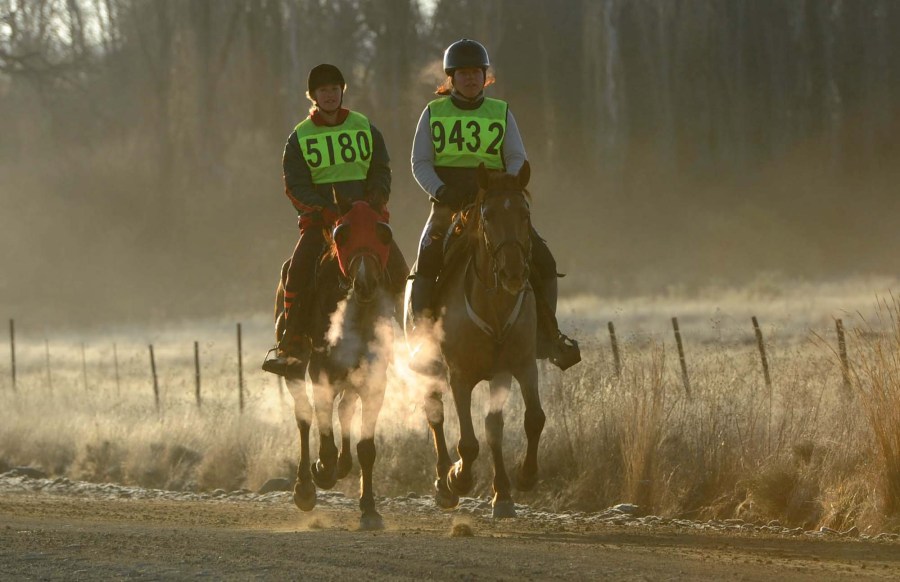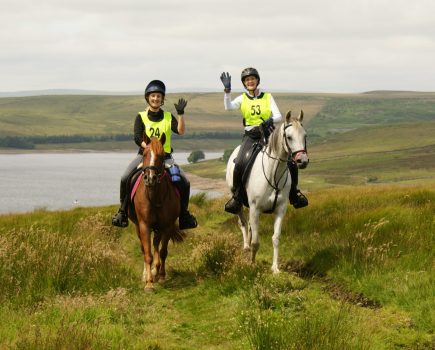#Hack1000Miles in partnership with Wintec Saddles
The key to a successful long ride is to go steadily within your horse’s limits, as you don’t want to tire them out prematurely. But how exactly can you do this if you’re on the clock? Well, the answer is by pacing your hack.
When you enjoy hacking regularly, you’ll know roughly how long certain rides or distances take, and you can use this information to inform your training and plan for pleasure rides and endurance events.
“The key is to try to keep moving at a consistent pace. You know the times that suit your horse, so keep to that,” advises Team GB endurance rider Linda Cowperthwaite, who has been involved in the sport for over 35 years.
“Whatever distance you’re doing, the goal is to finish in the best health, and you know the time that will achieve that.
“At an endurance ride you need to keep walking to a minimum, because it really drops your time off,” she continues.
“But equally, you don’t want to gallop flat out because there’s a higher risk of tiring or injuring your horse because you’re going faster, and you’ll have to walk in.
“It’s about striking the balance — sticking to a consistent pace.”
Check your route
Once you arrive at your pleasure or endurance ride, take a look at the course map.
“Whatever level you’re at, look at the ride map before you head out,” says Linda.
“You wouldn’t do dressage without learning the test, or show jump without walking the course first.
“You don’t have to memorise the map, but look at the route and see what terrain you’ll encounter so you can set your own speeds and targets.”
Planning ahead like this means you can work within your horse’s strengths to complete the distance successfully.
Take into account any hills that might eat into your time, or flat stretches where you can recoup time.
Consistent average speed
This element of pacing is about maintaining a consistent average speed.
You don’t have to trot the whole ride no matter the terrain, but instead set yourself up for success by adapting to what lays ahead.
“If you look at the map and see there’s a huge climb just before halfway, you need to make sure you have got some time in hand to allow for that, because climbing will take a lot out of the horse,” says Linda.
“You’ll then have the downhill section.
“Going uphill is like cardio and going downhill will put additional strain on your horse’s legs and joints, so you need to factor this in,” she adds.
“This is especially true if you have a novice horse, as they can find this really hard work so you don’t want to rush.”
Know your horse’s strengths
How well you know your horse is a major part of successful pacing.
For example, are they really good at going up hill — or will they find it easier to make up time on a flat section?
Linda employs different tactics depending on the horse she’s riding and their individual strengths, weaknesses and preferences.
“My Arab x Appaloosa loves rough terrain and really enjoys going up and down hills, whereas my other horse doesn’t.
“I feel him almost sigh when he sees a hill,” says Linda.
“When he was a novice, I didn’t want him to hate it, so when we had to go up hills I’d make sure we would time it so he could walk up.
“Fortunately, one of his strengths was cantering for long stretches as he finds that easy, so I planned that in when looking at the course map.”
Consider the weather
It’s great to plan for the best of intentions.
The weather often loves to throw a spanner in the works, so you need to remain adaptable when planning how you’ll pace your hack.
“On a nice spring day you might be able to bowl along faster, but in June when it’s hot and humid you need to take this into account, particularly if you have a heavier breed of horse,” says Linda.
“Weather can really impact speed, so set a time based on what’s capable for you and your horse. If you’re not meeting it then go slower, don’t push.
“It’s better to sacrifice the ride and not meet the target so you can do better next time rather than push your horse too much.
“You don’t want your horse to not enjoy it.”
This content is brought to you in partnership with Wintec Saddles, durable, comfortable, easy-care, weather-proof saddles for everyone.
Main image © Foto24/Gallo Images/Getty Images









